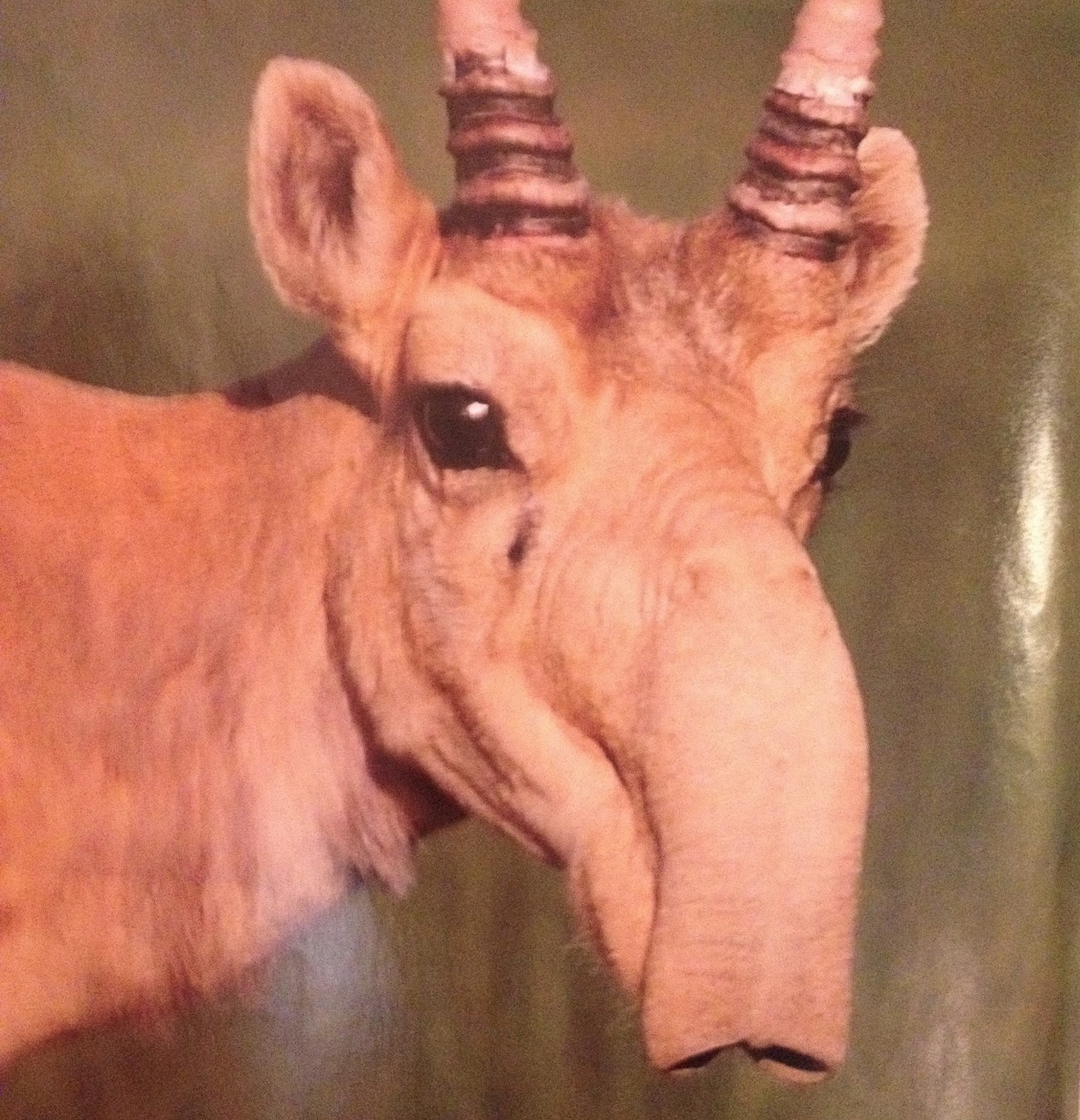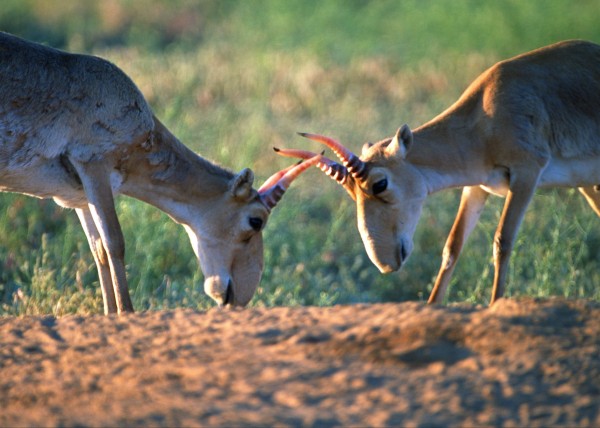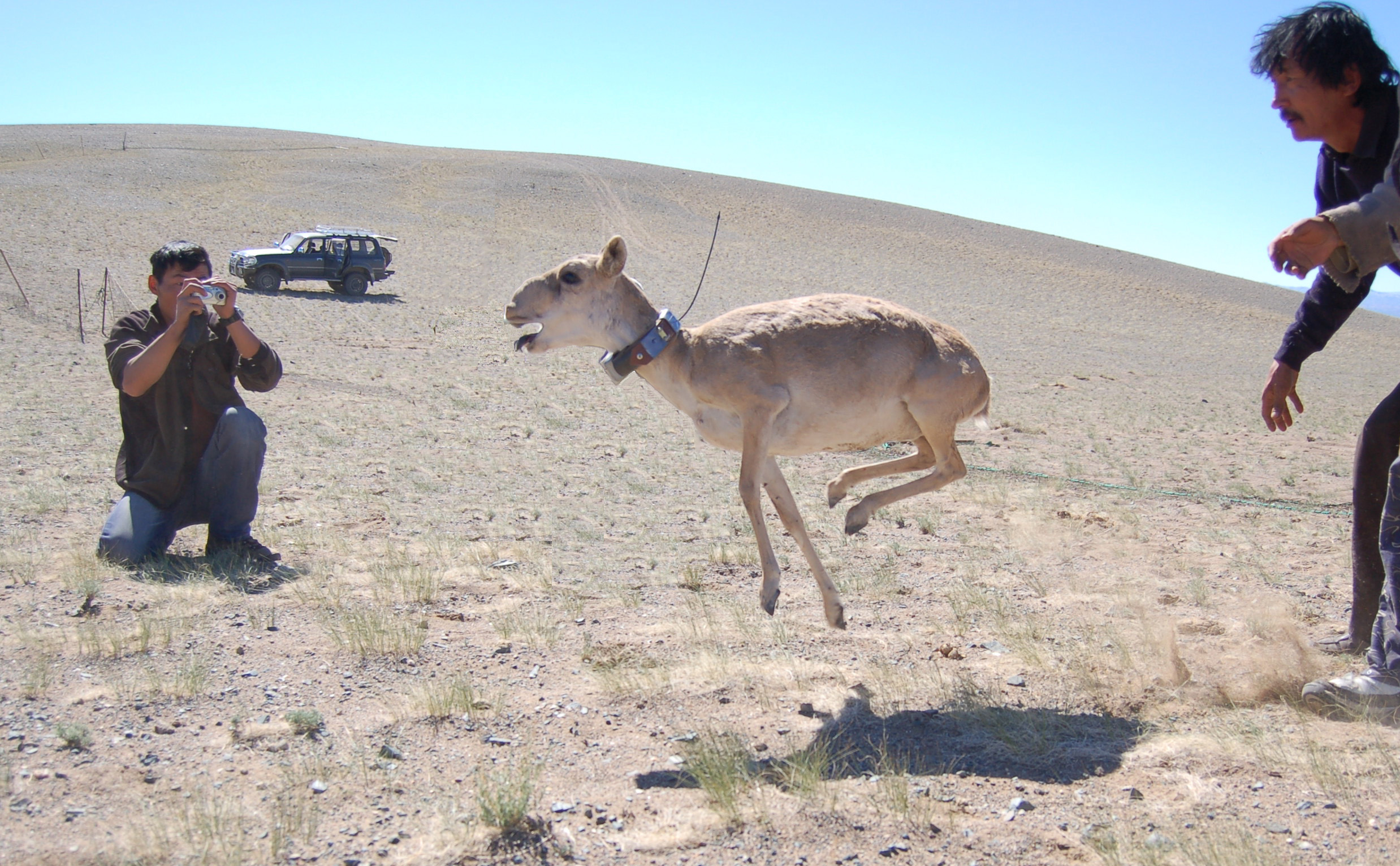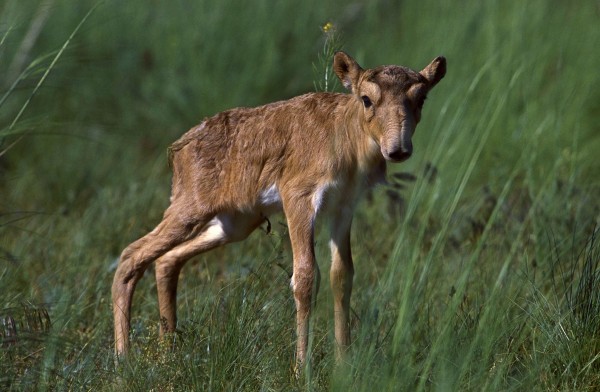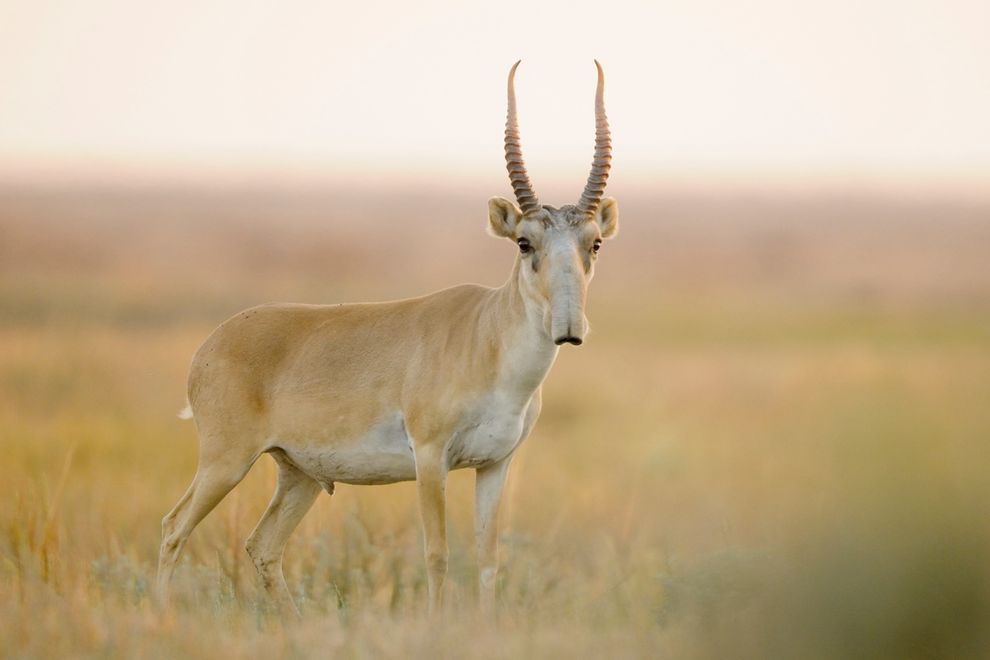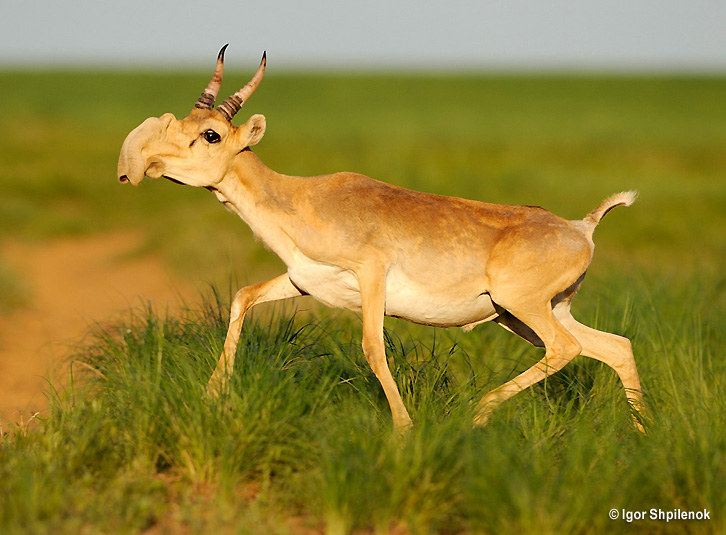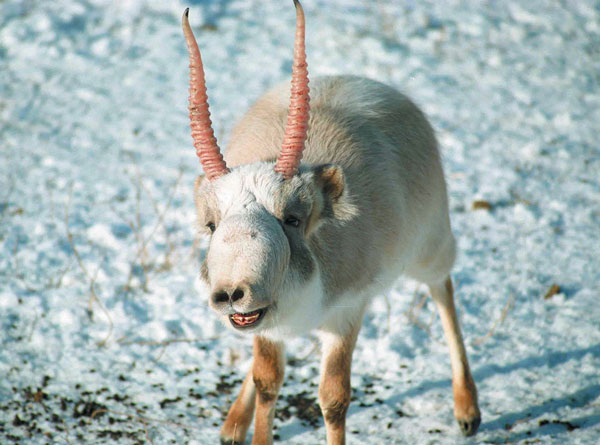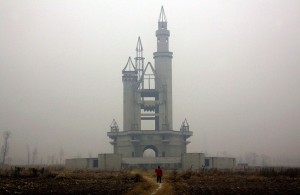Saiga Antelope: Strange & Almost Extinct
When I first saw a photo of a saiga antelope (Saiga tatarica) I had to do a Google image search immediately to make sure it was an actual real thing. I had no idea about these lovely guys at all.
Once upon a time the saiga were spread far and wide from America to Britain and the Carpathians to China. Huge, roaming herds of antelope with trunks picking plants dry of their wares as they wandered hundreds of miles to greener pastures.
Saiga stand around a metre tall at the shoulder, but what makes them really stand out of the crowd is that impressive trunk-like hooter of theirs. The flappy proboscis probably helps reduce the amount of dust they inhale on the dry steppes during summer, and helps warm air up before it gets into the body during the much nippier winters.
By the 1920’s the saiga had been almost hunted to extinction, but in the 50’s a couple of million could be found chilling out in the USSR. When the USSR collapsed and no one was watching the borders anymore, the population was decimated by people trying to make a quick buck out of the sale of the saiga’s horns.
At one point, almost unbelievably, the World Wildlife Fund promoted the use of saiga horn in favour of further worsening the demise of the rhino. Not their best plan ever.
Saiga: Close To Extinction
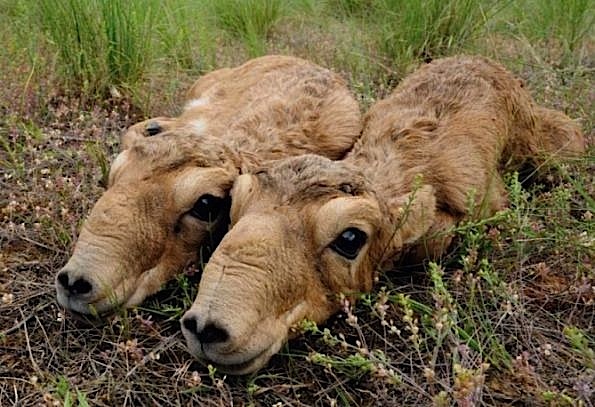
Now, of course, they’re endangered. The saiga are only to be found in one area of Russia, a small section of Mongolia and three areas of Kazakhstan. The saiga most recently became extinct in China because, guess what, their horns are used in Chinese medicine. What a joke.
It is illegal to kill the saiga in China, but that’s not much help seeing as there aren’t any there now. You can’t buy or sell saiga horns in China legally either, but of course that just drives up the price and the willingness of poorer nations to fill the gap.
In June 2014, Chinese customs at the Kazakh border uncovered 66 cases containing 2,351 saiga antelope horns, estimated to be worth over Y70.5 million (about £7 million). At that price, each horn would cost nearly £3,000.
What makes this even worse is that the Chinese traditional medicine man will only use the coating of the horns, the rest is discarded. The core of the horn is made of bone and considered useless to the herbalists. You will find the antelope horn ingredient in “medicines” for detoxification, cold treatment and lung disease.
The thin shavings of horn are also sometimes added to “cooling” drinks which are supposed to help bring down fevers and “heatiness”. So basically these endangered saiga antelope are being slaughtered in order to do a job that a cool, damp cloth could quite easily do.
So if you’re ever in Asia and you’re looking for a cooling drink, check the ingredients for Cornu Saiga tataricae. If you see it, avoid it. Especially if you are vegetarian. The chap in the Chinese medicine store may well tell you that the horns fall off naturally and are simply collected, or that they are a farmed animal. Don’t believe him, saiga horns don’t come off, not unless they’re chopped off a corpse, and no one farms saiga for reasons that will become clear later.
Saiga numbers are thought to have dropped by as much as 95% in the last 15 years which is a horrific slump. There’s probably around 150,000 left in total.
Saiga: Even Closer To Extinction
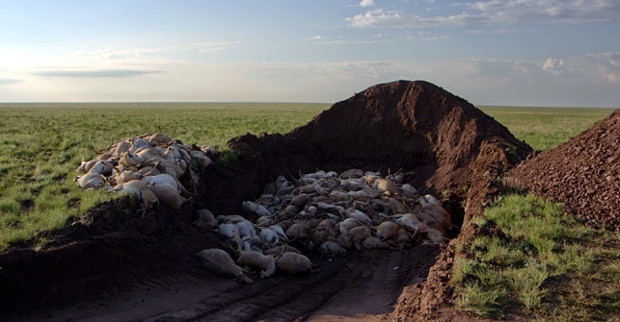
Recently (2010) there was a massive die off in the Ural region of Kazakhstan where around 12,000 individuals died in a relatively short space of time. The saiga deaths were due to pasteurellosis (a common bacterial infection) as far as they can tell, but why the disease hit so hard and fast they’re not too sure. Some worry that poisoning of pasture might have been involved, but that is currently no more than hearsay.
UPDATE: May/June 2015 – more than one-third of the entire world’s population of saiga deer have died off in a 2 week period. Some mysterious illness has killed 125,000 individuals in a matter of days. It could well be lights out for the saiga.
UPDATE: July 2015 – The cull mentioned above went on to kill 134,000 individuals, which is approaching half of the global population.
Males, females and newborn calves were all affected, with sick animals dying within hours of showing symptoms, including diarrhoea, breathing problems and frothing at the mouth.
Mass die offs of the nomadic saiga are not unknown, but this is different. Richard Kock, a wildlife veterinarian at the Royal Veterinary College said:
When a herd is affected, 100 percent die. That does not fit any natural, biological pattern. It’s a sort of unnatural mortality… We have climate change, we have agriculture, we have loss of species historically – so the ecological composition on the steppe is different. If you add them altogether, it might lead to this extraordinary sort of indicator of a problem.
UPDATE: November 2015 – The total opf the Kazakh die of hit around 200,000 dead saigas in the end. Around 70% of all saiga, dead. It’s still not clear exactly what the problem was. A particularly lush spring and consequently lush grasslands may have spurred bacteria that normally hitch a ride in their guts to turn bad.
Captive Breeding Programmes?
As for a programme of captive breeding, that seems to be a no-go too. Efforts to keep the saiga antelope in compounds have always ended in tears:
They have a strong flight instinct and often blindly ran into the fences, broke their necks, jaws or hips and had to be killed,” Karlstetter said. “The Cologne Zoo managed to keep a small group for about 30 years until a fox killed a newborn in 2006, which set the rest of the group into panic, resulting in fatal injuries of most [of the] animals. The last male died in 2009.
No one is quite sure how the little blighter manages to keep coming back from the brink of extinction, but we’re all pleased that it does. Hopefully this latest cataclysm won’t truly be their last.
Here are some more pictures for you:
MORE NATURE AND ENVIRONMENT READING:
KIVALINA – CLIMATE CHANGE’S NEXT VICTIM
THE 2ND BIGGEST ANIMAL IN THE WORLD


